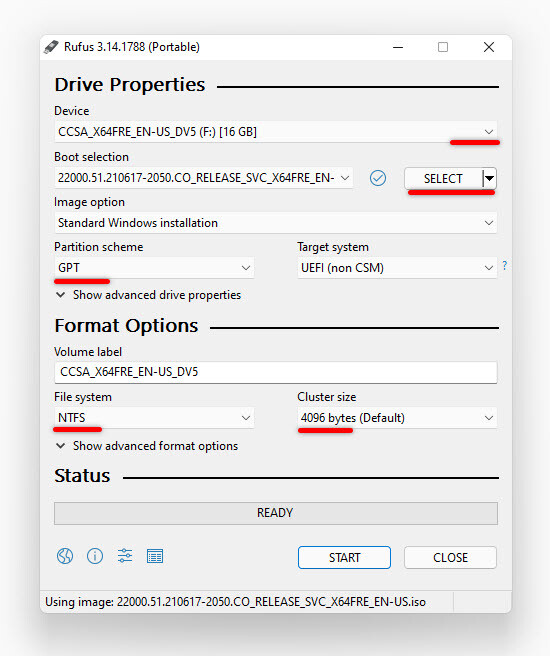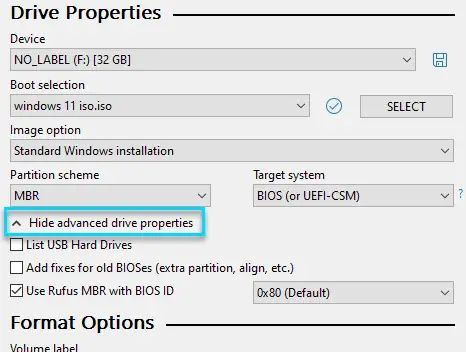

Step 9: After following all the steps properly, now click on the Next button. After choosing it, click on the “Show advanced format option” and you will get three different checkboxes, tick all and proceed. Step 8: In the File System menu, for the GPT Partition scheme, it would be automatically set to FAT32 and for MBR, it will set to NTFS. But we suggeted you to skip it and leave it as it is. Note: There is an Advance option, using which you can configure the installtion more. Step 7: Get back to Rufus and select MBR under the Partition Scheme option if your system has BIOS Legacy and select GPT for BIOS UEFI. Now it will show multiple information, find the BIOS Mode, and check whether it is legacy or UEFI. To know about it, press the Windows+R shortcut on your keyboard and now type msinfo32 and click on the OK button. S tep 6: Now to proceed, you will need the BIOS mode of your system.

In Standard Windows Installation, it will run Windows on other disks while on the “Windows To Go” option, one can directly run Windows from the device. Step 5: Now choose between the “Standard Windows Installation” and the “Windows to go” options.

Step 4: After you choose your desired USB Drive, click on the Boot selection menu and select from Non-bootable, FreeDOS, and Disk or ISO Image. If you have an external drive, then Rufus will automatically select it, and if you don’t then manually choose your desired USB Drive from the DEVICES section. As soon as you double-click the file the software will start running on your computer. You can run the software by just double-clicking the installed file.

After downloading it, you can run it seamlessly as it’s an executable file and doesn’t need installation. Download Rufus 3.1 (latest) which hardly weighs around 1.5MB in size. Step 2: Go to rufus.ie website and download Rufus software for your system.


 0 kommentar(er)
0 kommentar(er)
